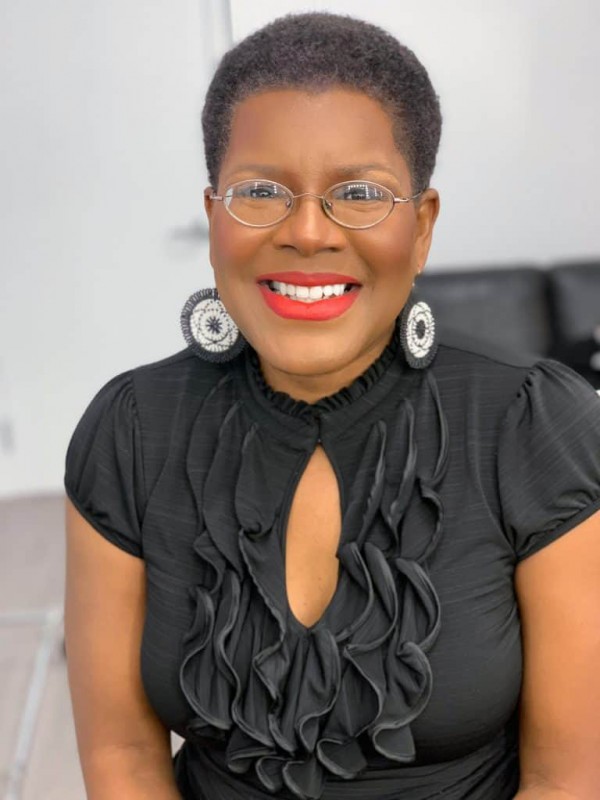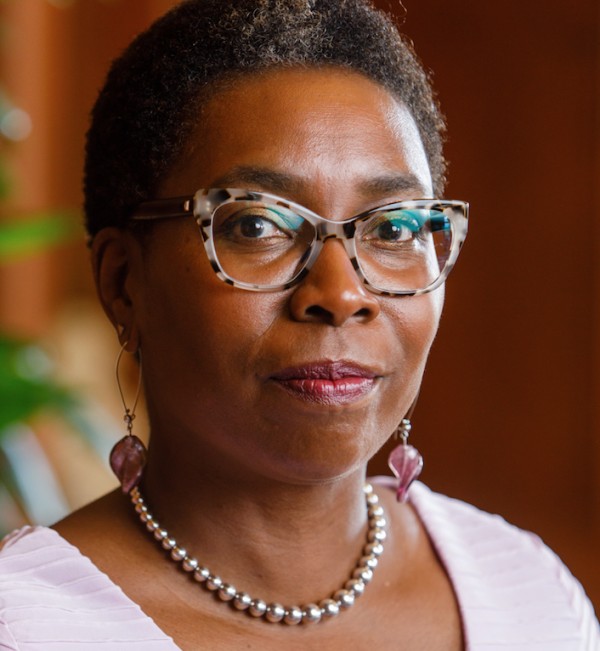Kabul Rocks
Alykhan Kaba manages Afghanistan’s first rock band — with insights gleaned from music entrepreneurship classes at Northwestern.
Tananarive Due '87 and Robin Means Coleman explain how the subgenre has burst into the mainstream. By Diana Babineau
Tananarive Due remembers watching black-and-white monster movies with her mother while growing up in Miami in the 1970s.
“I just loved it,” says Due ’87, an award-winning fiction writer. “As a young kid, I just saw it as a fun, roller coaster ride thing.
“You haven’t lost anything or suffered anything when you’re a child, so it doesn’t have the same impact. But years later, I came to realize that my mother’s fascination with horror movies was in reaction to trauma. And that would be the racial trauma of having grown up during Jim Crow and, more explicitly, her civil rights activism in the 1960s, when she had a police officer throw a tear gas canister in her face. She carried a lot of scars.
“There are a lot of Black horror fans who have been able to use the fantasy of horror and its imaginary monsters to process real-life trauma, including real-life racial trauma.”
Due is part of the creative team behind Horror Noire: Six Stories of Black Horror, a new film anthology that comprises a mix of original and adapted horror stories by Black creators, all centering Black characters. The anthology — which includes Daddy, Bride Before You, Brand of Evil, The Lake, Sundown and Fugue State — is available for streaming on Shudder on Oct. 28.

Harper Collins just rereleased Tananarive Due’s first novel, The Between, first published in 1995. The rereleased version received a review from The New York Times in October. Photo credit: Melissa Hibbert
Due, who co-wrote the screenplays for The Lake (based on her short story by the same name) and Fugue State with her husband, Steven Barnes, sees the film’s premiere as part of a renaissance of Black horror — a subgenre of films created by and for Black people.
“The anthology is a fantastic introduction for people who don’t know what Black horror is or who have preconceived notions about it,” says Due, who teaches Black horror and Afrofuturism at the University of California, Los Angeles. “I think they’ll be pleasantly surprised.”
Due was an executive producer of the 2019 documentary Horror Noire: A History of Black Horror, which provided both seasoned horror fans and newbies alike an untold history of Black Americans’ relationship with the genre. Based on the research of Robin Means Coleman, the Ida B. Wells and Ferdinand Barnett Professor in Communication Studies at Northwestern, the documentary traces the history of how Blackness has been portrayed in horror films over the course of a century, and explains how Hollywood has catered primarily to white audiences by excluding Black actors from horror films or casting them as stereotyped background characters. Those films portrayed Black people as monsters to be feared and exploited Black characters as tropes in service to white characters. Coleman, who is also Northwestern’s chief diversity officer, published a groundbreaking book on the topic in 2011.
But, importantly, the documentary also points to the evolution and rise of Black horror as a genre that subverts the racist tropes and misrepresentations of Black people in horror films of the past. The new Horror Noire anthology, a follow-up to the documentary, is part of this canon of work that reshapes how Black people are represented on screen.
“Tropes like the Black savior, the magical negro, the self-sacrificing Black person, the Black boogeyman, the Black guy who pines after white women — you’ll see none of that in the Horror Noire anthology,” says Coleman, who served as a consultant during the development of the new anthology. “Those are the tropes that we work to disrupt.”

Robin Means Coleman is currently at work on a second edition of her 2011 book Horror Noire: Blacks in American Horror Films from the 1890s to Present that will include an analysis of the new leaps made in the genre over the past decade.
Due’s The Lake is one such example. “What did we get before The Lake?” Coleman says. “Well, before that we had Creature from the Black Lagoon [1954], which was this awful metaphor for Blackness — sort of a caricature and stereotype of a monstrous, Black boogeyman. The Lake disrupts that trope, and it also centers women, which is really awesome.”
Films such as Night of the Living Dead [1968] and Tales from the Hood [1995] (perhaps the first Black horror anthology directed by a Black director, Rusty Cundieff) made strides in subverting the negative depictions of the past, by giving Black actors lead roles and Black characters more agency.
But it was Jordan Peele’s groundbreaking 2017 film Get Out, which starred a Black protagonist and subverted audience’s expectations — and past tropes about the innocence of white characters on screen — that became perhaps the most well-known Black horror film and played a huge role in bringing the subgenre into the mainstream.
“It’s a hugely exciting time not just for Black horror creators but all kinds of marginalized horror creators to have their voices heard,” Due says.
While Get Out brought lots of attention to the genre and was a powerful statement on the danger and violence of all-white spaces, Due stresses that Black horror is more than just stories centered around racism and slavery.
“Black horror is not just one thing,” Due says. “Black horror creators don’t just sit around thinking about racism all the time — there are as many kinds of Black horror as there are any other kind of horror. There’s the monster within, the monster in disguise, man versus creature. And, obviously, as Black creators we are going to have Black characters who are monstrous, but it’s coming from a different place when it’s a Black creator. It’s not meant to be a trope. It’s not meant to be soothing to a white audience.”
“There has been kind of a Hollywood obsession with horrific stories that center on slavery or the impacts of slavery,” says Coleman. “But in the new Horror Noire anthology, racism doesn’t take center stage as the thing that is most monstrous in Black people’s lives. These aren’t films written and created to re-traumatize. They really are entertaining stories.”
For those who are less familiar with the horror genre, Due explains the appeal.
It’s an expression of empowerment and validation, she says. “The idea is that you can emerge on the other side, either feeling empowered because, like in Get Out, the main character, Chris, got away — or, in the case of horror movies that don’t have happy endings, it’s a kind of a validation of what it feels like to go through a horrible experience. And when it ends, you turn it off and think, ‘Well, thank goodness that isn’t real.’ And that’s empowering too.”
Diana Babineau is a writer and editor for Northwestern Magazine, in the Office of Global Marketing and Communications.
Reader Responses
No one has commented on this page yet.
Submit a Response